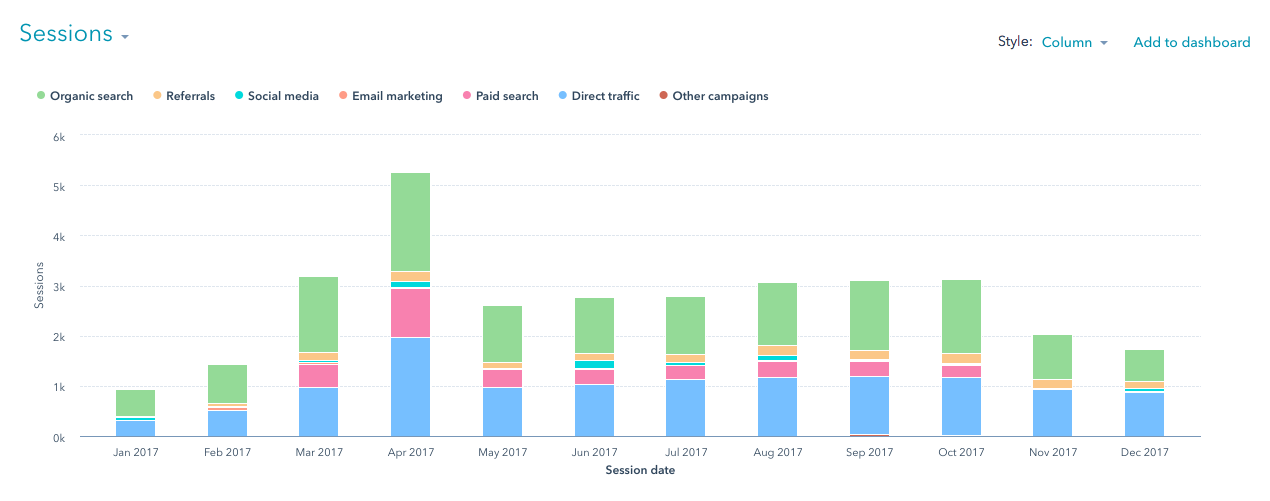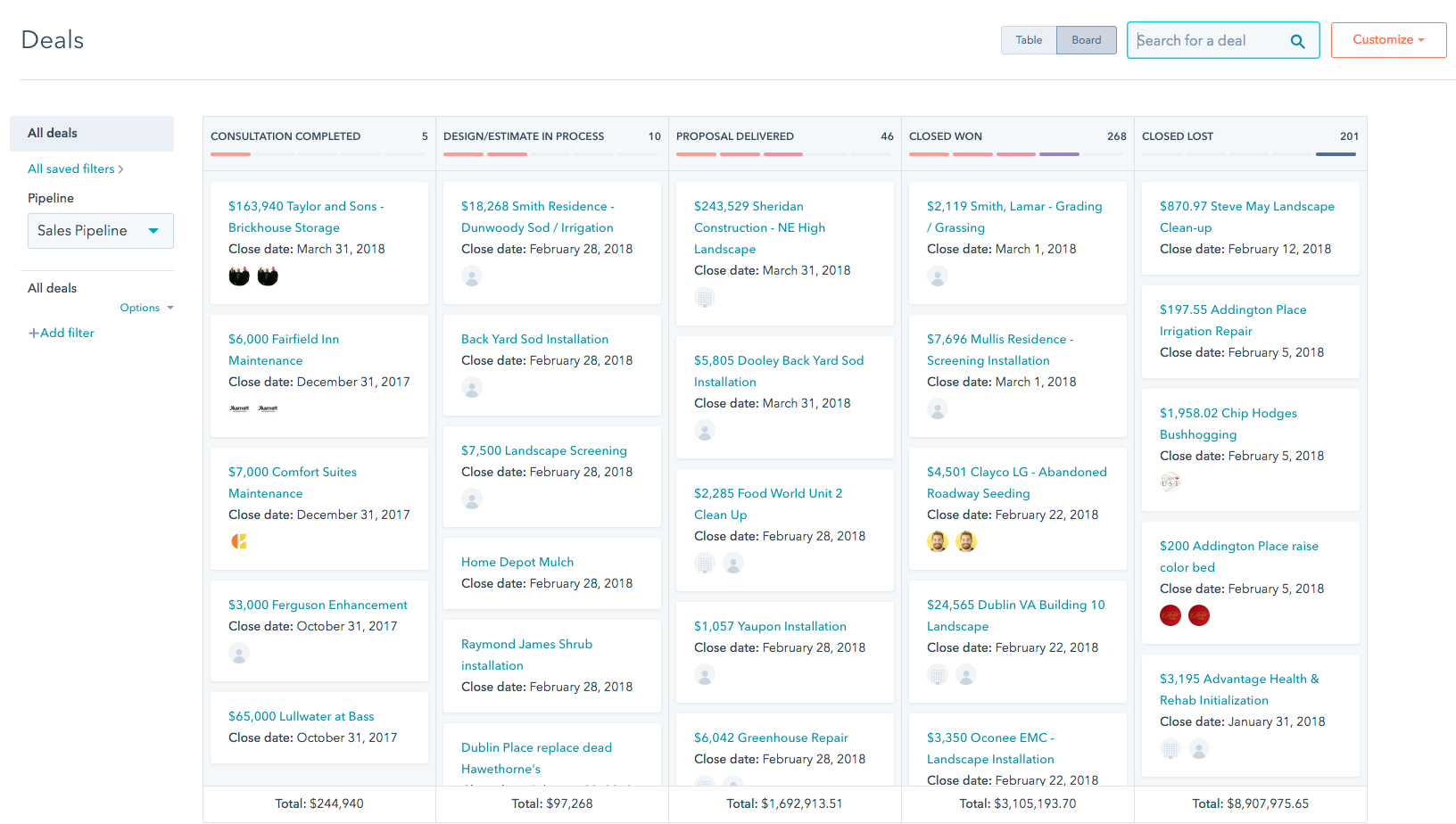Topics: Search Engine Optimization (Seo) Social Media Content Marketing Web Development Analytics Hiring A Marketing Agency
5 Meaningful Website Metrics to Understand & Track
 Author: Chad Diller
Author: Chad Diller
 I’ve been in your seat...scratching my head at meetings with a local digital agency, begging them to just make some sort of sense of it to me. I’m not naturally a “numbers guy”. If you throw too many website analytic figures and percentages onto a report, my brain turns to mush. Give me the big picture then tell me how to fix it!
I’ve been in your seat...scratching my head at meetings with a local digital agency, begging them to just make some sort of sense of it to me. I’m not naturally a “numbers guy”. If you throw too many website analytic figures and percentages onto a report, my brain turns to mush. Give me the big picture then tell me how to fix it!
Although I’ve learned how to understand more of these numbers over the years, I’m still amazed at how many digital marketing experts and landscaping professionals are still content with mushed brains. You should be able to more easily understand what really matters to grow your business.
Whether you geek-out at numbers, understand a few of them, or are completely clueless, there are some important metrics that you should track and understand. Smart, future marketing choices will lead to more money on your bottom line. Let’s take a look at them.
1) Local Traffic
Please...stop obsessing about ranking on the first page of search results. That is meaningless unless you actually have people in your local service area visiting your website.
If your website is connected to Google Analytics, you should be able to determine how many local visits you're getting in a given time period.
These numbers should increase as time goes and can vary based on a number of factors such as what metro area you're located in. You should be seeing at least 40% of your traffic come from your local area. If you have less than 25%, you have some SEO work to do.
(RELATED READING: What Percent of Website Traffic Should Be Local? (Here's What We Found))
2) Website Traffic By Source
Before we dive into website traffic and the metrics to follow, there is a basic (and crucial) principle to always keep in mind. Your website will get all sorts of visits, but knowing the total number of visits is not enough.

It’s important to have a way to track the sources of website traffic. Tools like Google Analytics (or my favorite, HubSpot), can show you not only the quantity of visits but exactly where they’re coming from. These include:
- Organic: If someone enters a phrase in a search engine, there will be results aside from the pay-per-click (PPC) ads that may appear at the top and bottom of the page. These are classified as Organic search results. This category of visits typically increases as you produce more relevant content that is A) about the related topic and B) mentions your geographic area. Google will try to find the best search result and if there is a local alternative, it could be your article that shows up in search.
- Paid: If your company uses Google Adwords to place PPC ads, the resulting visits would be separated into this group.
- Referral: If your company has links on other websites (such as in an online article or a business listing profile) and a searcher clicks the link and is brought to your website, that is considered Referral traffic.
- Social: Likewise, any links you would have natively on social media sites (both in your profile and news feed), that drive traffic to your website are considered in this group of visits.
- Paid Social: If you are placing any paid ads on Facebook, LinkedIn, etc. some analytic tools can separate out this segment of social traffic.
- Email: If your website receives visits from a link in emails (through email marketing or even a link in your email signature), these website visits also get their own segment.
- Direct: When someone directly enters “yourwebsite.com” exactly into your browser’s search address bar, that becomes a direct hit. That often occurs as of a result of branding activities where people see your website address and remember and enter it exactly.
Again, the source is extremely critical in your analysis of the metrics I’ll cover next. You will notice trends by source. Over time, it will become more clear which ones perform better, directing you to make better landscaping or lawn care marketing decisions to drive people to your website, which leads to the next resulting metric.
3) Quantity of Qualified Leads
Traffic is great and all, but if those visitors aren’t converting into qualified leads, it won’t result in a great ROI on whatever you’re doing to increase website traffic. A qualified lead is, by simple definition, someone in your service area that is interested in a service your company offers.
Website forms are the best way to capture lead information. If you’re using a reporting system like Google Analytics or HubSpot, you should be able to see how many visitors (for each traffic source) actually fill out a form and become a lead.
Adding fields to your form such as, “How did you hear about us?”, can help to give a deeper level of detail for how all of those Direct traffic leads are coming in. Did they see your truck or a particular ad?
As traffic increases, so should your leads. If this isn’t happening, then there’s a lead conversion problem. Some of the potential problems could be:
- Confusing or outdated website layouts
- Poor or missing calls to action
- Images or videos that aren’t very compelling
- Poor copywriting and messaging
Keep track of historical trends of the number of leads for each traffic source. What are your leads in Q4 of this year versus Q4 the last two years by source? What are your visit-to-lead ratios? This can lead to conclusions such as, “Yeah, we’re getting a lot of traffic from X source, but barely anyone converts to a lead. Let’s reallocate that money or fix the conversion problem on our website.”
(RELATED READING: See How Easily You Can Use These 5 Elements of Storytelling to Sell More Work)
4) Number of Proposals Delivered
How many of your qualified leads actually turn into an opportunity for you to propose services? There are always going to be some people who lose interest or don’t call you back. There may also be a segment of leads that have no clue of what your services cost, and you may then disqualify them in your initial conversation for this or another reason.

However, a large portion of your qualified leads should turn into opportunities to deliver a proposal. But there are a number of factors that can influence your success in this area. These include:
- How your website’s positioning and messaging matches your ideal buyer profile
- The amount of time it takes for your company to initially respond to leads
- How long a prospect has to wait to talk or meet with a salesperson
This metric is not easily measured with Google Analytics. For this reason, I recommend an integrated CRM like HubSpot, which can connect the traffic source while also separating leads from these opportunities for business. Otherwise, you’re going to need to spend a lot of time manually entering this information into spreadsheets and doing your own calculations.
It’s important to follow-up as soon as possible and to make the process very meaningful for your prospective customer. Refine your process as much as you can to get legitimate business opportunities out of your incoming leads. Then you’ll get an opportunity to measure the following metric.
5) Resulting Sales
How many of your opportunities for business actually sell? As you look at the traffic sources, you may observe trends that indicate where you should spend more of your marketing budget. For instance, you may be able to identify which traffic source brings you the most sales opportunities. This can help you consider if your strategy is working and how much your cost per new proposal opportunity is.
Then again, if sales aren’t resulting, it could point to not a marketing problem, but a sales problem. Some of the factors that influence sales closing can include:
- Time it takes to get a proposal/design to your prospect
- Quality of sales presentations
- Diligence of follow-up if presentations don’t immediately close
- Ability to handle common sales objections such as price, timeline, solution quality, etc.
![]()
Taking a good, hard look at sales can help you identify training opportunities and processes that may need to be improved.
(RELATED READING: Let's Talk About Who Should Be Doing the Selling in Your Company)
Informed & In Charge
As a lawn or landscaping professional, your only job isn’t to just create beautiful lawns and landscapes. It’s also to improve your business. But getting the results you want out of your website and other marketing requires you to play an active role in your company’s success.
Will you continue to be passive and in the dark? Or will you make a firm decision to understand these metrics and make decisions based on data versus gut feelings?
If your brain is still a little mushy on these metrics or you’re not quite sure where to get the information from, that’s okay. Our digital marketing agency is made up of a team that loves to teach. Whether it’s going over detailed numbers or just giving you a big picture and actionable next steps, we'd love to clearly communicate what really matters to your lawn or landscape company. Helping you understand these insights is exactly what you'll need to make great future decisions.
Feel free to contact us to schedule your Total Marketing Review which includes 12-16 pages of practical insights, including how your website is performing. And if you're looking to clear up your mushy brain, subscribe to our blog. We break down topics that are often confusing and you can join almost 3,000 professionals who get these weekly updates to grow their businesses.






